Last-Minute NYC Holiday Gift Guide 🎁
We’ve created a holiday gift guide with presents for the intrepid New Yorker that should arrive just in time—


In the tony 17th arrondisement in Paris, a five-story 1970s-era medical clinic holds a secret: this unremarkable building is the site of the studio that built the Statue of Liberty. At 25 Rue de Chazelles, the architecture firm of Gaget, Gauthier & Co. had 3,000 square feet in which to build the statue that would rise to 111 feet, 6 inches from foot to the top of her head. In fact, the idea to gift the United States a statue for the 100th anniversary of the Declaration of Independence was first put forth by Gaget, Gauthier & Co. The idea so inspired the French writer Edouard de Laboulaye that he enlisted his friend Auguste Bartholdi to design it, with Gustave Eiffel coming in to lend his steelwork expertise.
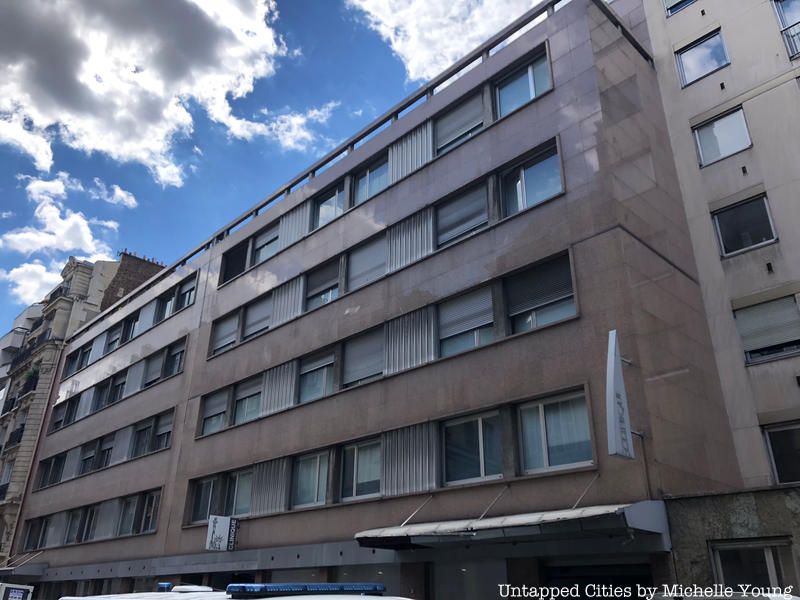
If you look more closely at the building, which holds the Clinique International du Parc Monceau,” you’ll find that on the side of the building, next to a driveway there’s a long forgotten plaque installed in 1960 to commemorate the birthplace of the Statue of Liberty. It reads in French, “Cette plaque commemorative offerte par Monsieur Milt Forrest au nom du people American a ete inauguree le 23 Mai 1960 sous le haut patronage de son excellence Monsieur L’Ambassadeur des Etats Unis d’Amerique en France.” Translated, it reads” This commemorative plaque, donated by Mr. Milt Forrest, on behalf of the American people was inaugurated on May 23, 1960 under the patronage of his Excellency the Ambassador of the United States of America in France.”
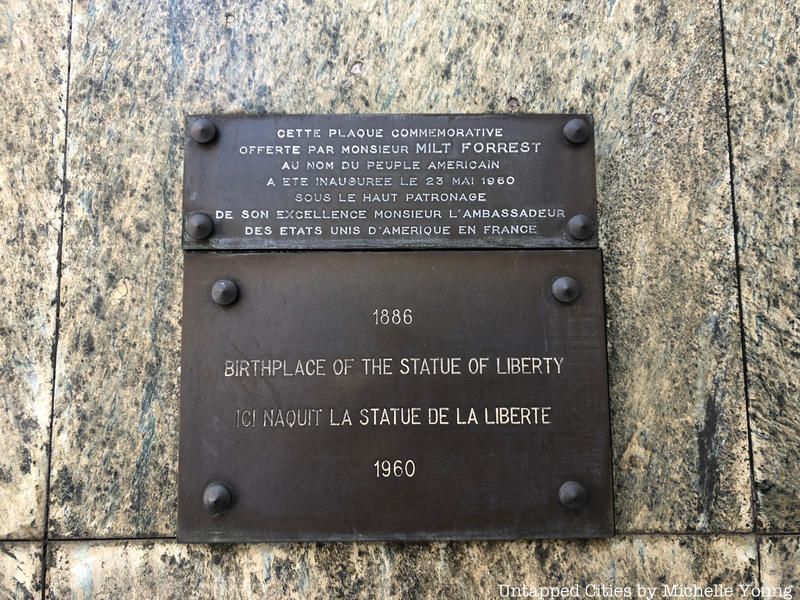
The logo of the medical clinic offers another clue: it has the head of Lady Liberty on it. And finally, for those that venture inside, the lobby has a real bronze model of the Statue of Liberty by Auguste Bartholdi. On the right side, you’ll see the year of the model, 1875, with the words “Modele du Comité.” An employee of the clinic who works at the main desk confirmed that it is indeed an authentic model and added that the studio was once on both sides of the street.
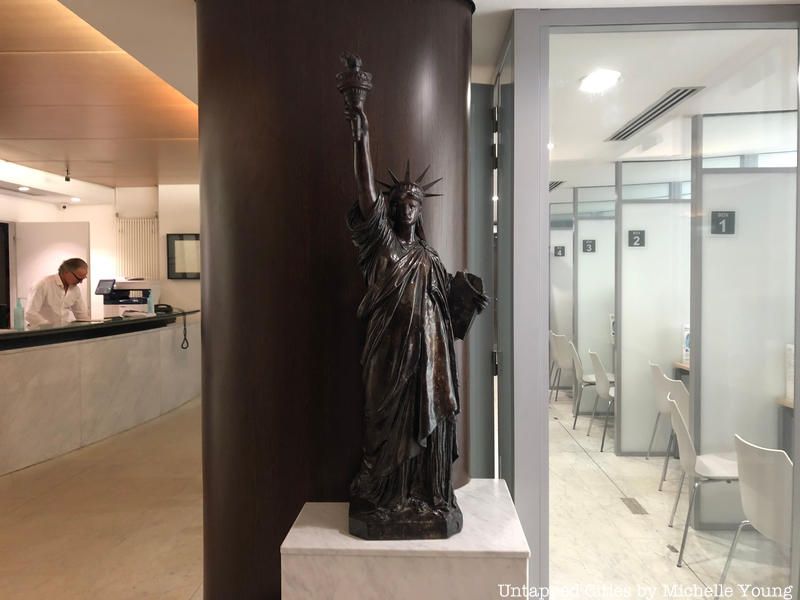
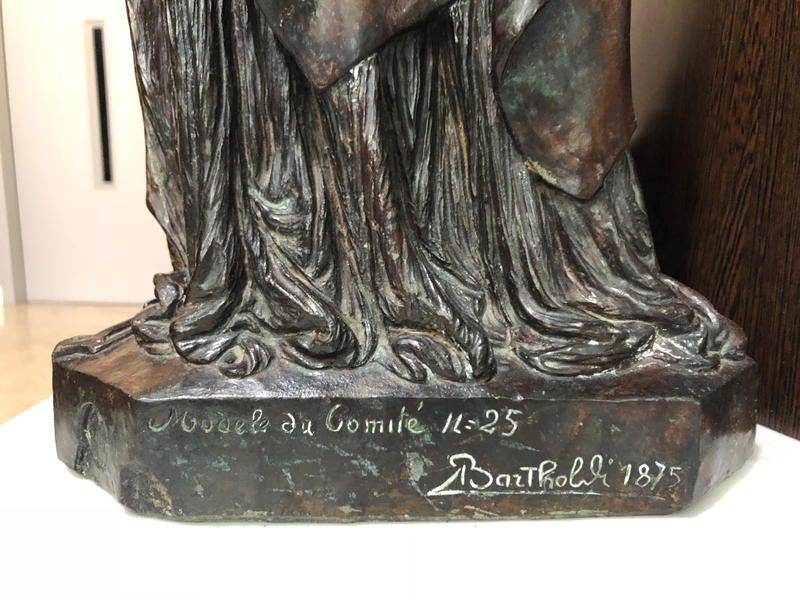
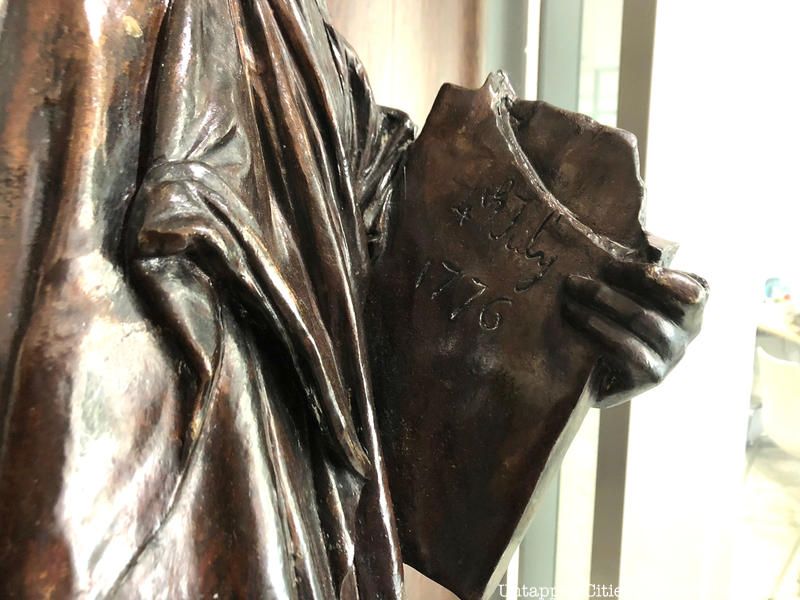 The final version of the Statue of Liberty has the year in roman numerals, as well as the four in July.
The final version of the Statue of Liberty has the year in roman numerals, as well as the four in July.
Now combined into a single building, there were several addresses that were originally part of the Gaget, Gauthier & Co studio. 23 rue de Chazelles was once the modeling workshop, where according to the Clinique International du Parc Monceau, “the plasterers sculpted the enlargements of the various elements of “Miss Liberty.” No. 23 also contained “the cave of Vulcan,” a metal forge where the skeleton of the Statue of Liberty and the copper plates of the statue’s envelope were created under the direction of Gustave Eiffel. At 21 rue de Chazelle was Bartholdi’s personal workshop, which he set up to “better supervise the work.
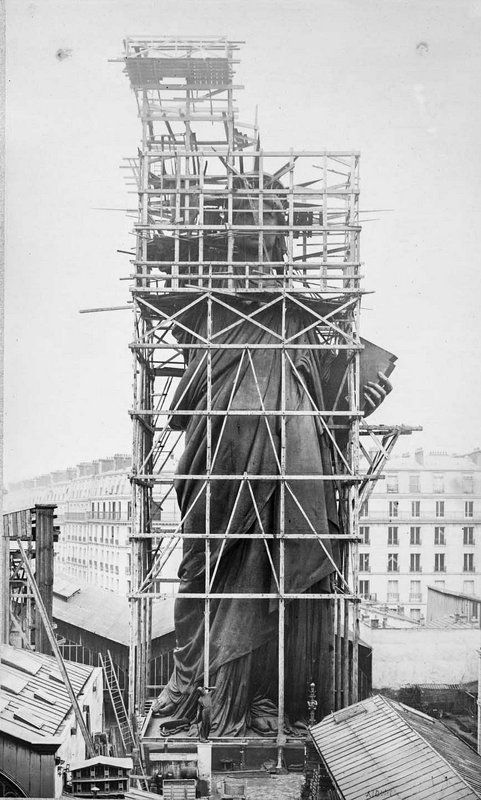
Photo from New York Public Library
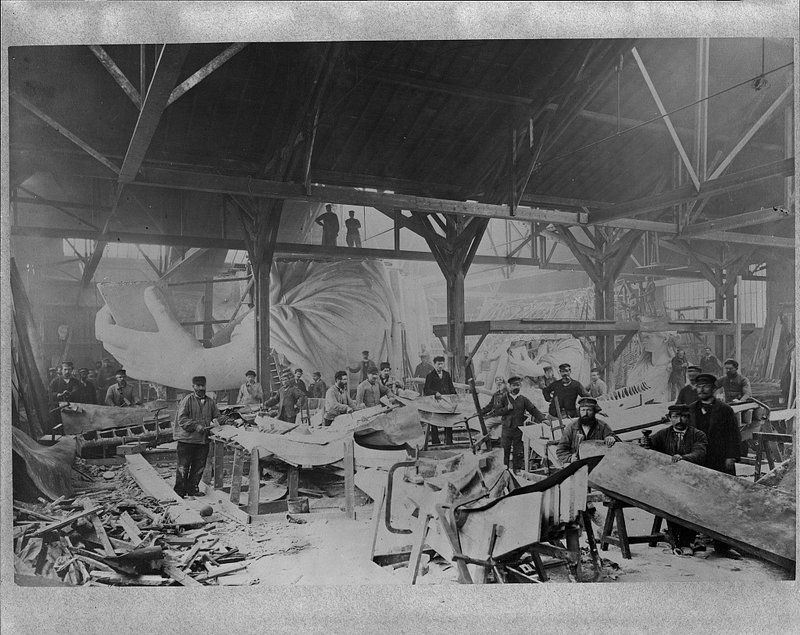
Workmen constructing the Statue of Liberty in Bartholdi’s Parisian warehouse workshop; first model; left hand; and quarter-size head. Winter 1882. Photo via Library of Congress.
The Statue of Liberty was completed in 1884, and in 1886 the 225-ton sculpture was dismantled into 350 pieces and shipped to New York. However, during the construction of the statue, various pieces were displayed in the United States as a fundraising effort: the arm and torch, the first sections of the statue to be completed, was displayed in Madison Square from 1876 to 1882, after being on display in Philadelphia for the 1876 Centennial Exhibition. Its head was on display at the Paris World Fair in 1878. In all instances, guests could climb inside the structures. However, by the time the statue was completed, the pieces had completed their “tour” and had returned to 25 Rue de Chazelles and were re-connected. Vintage photographs show the statue towering over the buildings around it, becoming unsurprisingly, a tourist destination.
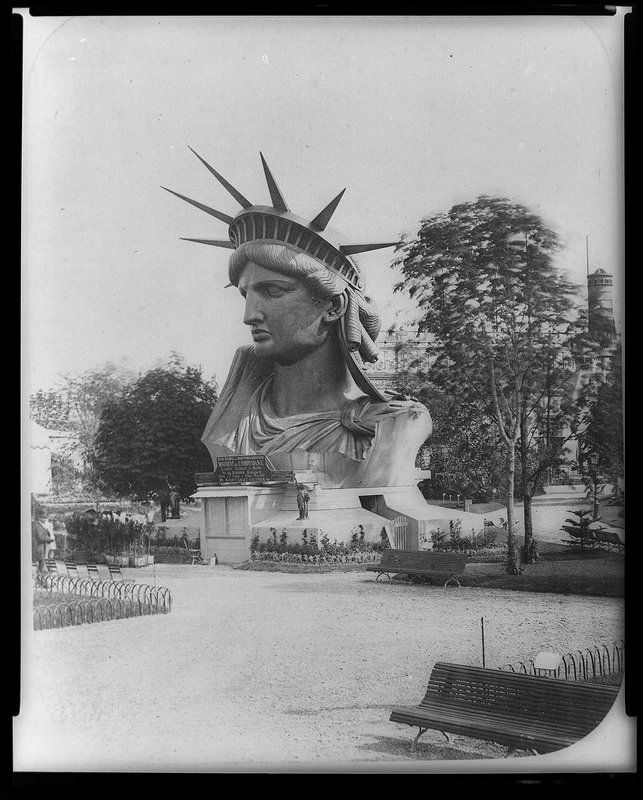
Head of the Statue of Liberty on display in Paris in 1883. Photo via Library of Congress. Photograph by Albert Fernique.
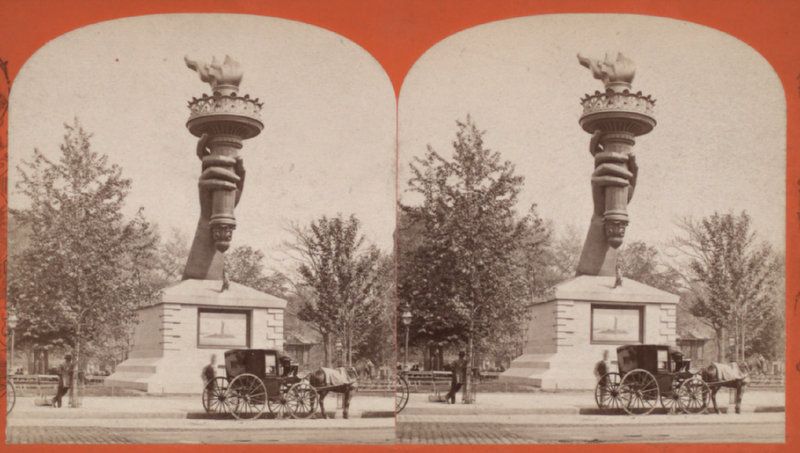
The hand and torch of the Statue of Liberty on display in Madison Square Park. Photo via New York Public Library.
We’re pretty sure Bartholdi, Eiffel, and de Laboulaye would be amazed at the recent news that the United States Postal Service has to pay $3.5 million dollars to the artist who created the Las Vegas version of the Statue of Liberty, after the agency accidentally using the face’s likeness as the inspiration for one of its Forever Stamps. Yet, the statue is also still used in the narrative of freedom here in the United States, with protester Patricia Okoumou climbing to the skirt level of the statue in protest of the country’s migrant policies on July 4th this year. If great art is intended to stimulate discussion and debate, the Statue of Liberty is going strong 132 years later.
Next, check out the Top 10 Secrets of the Statue of Liberty and discover 11 Statue of Liberty replicas in New York City and Paris.
Subscribe to our newsletter